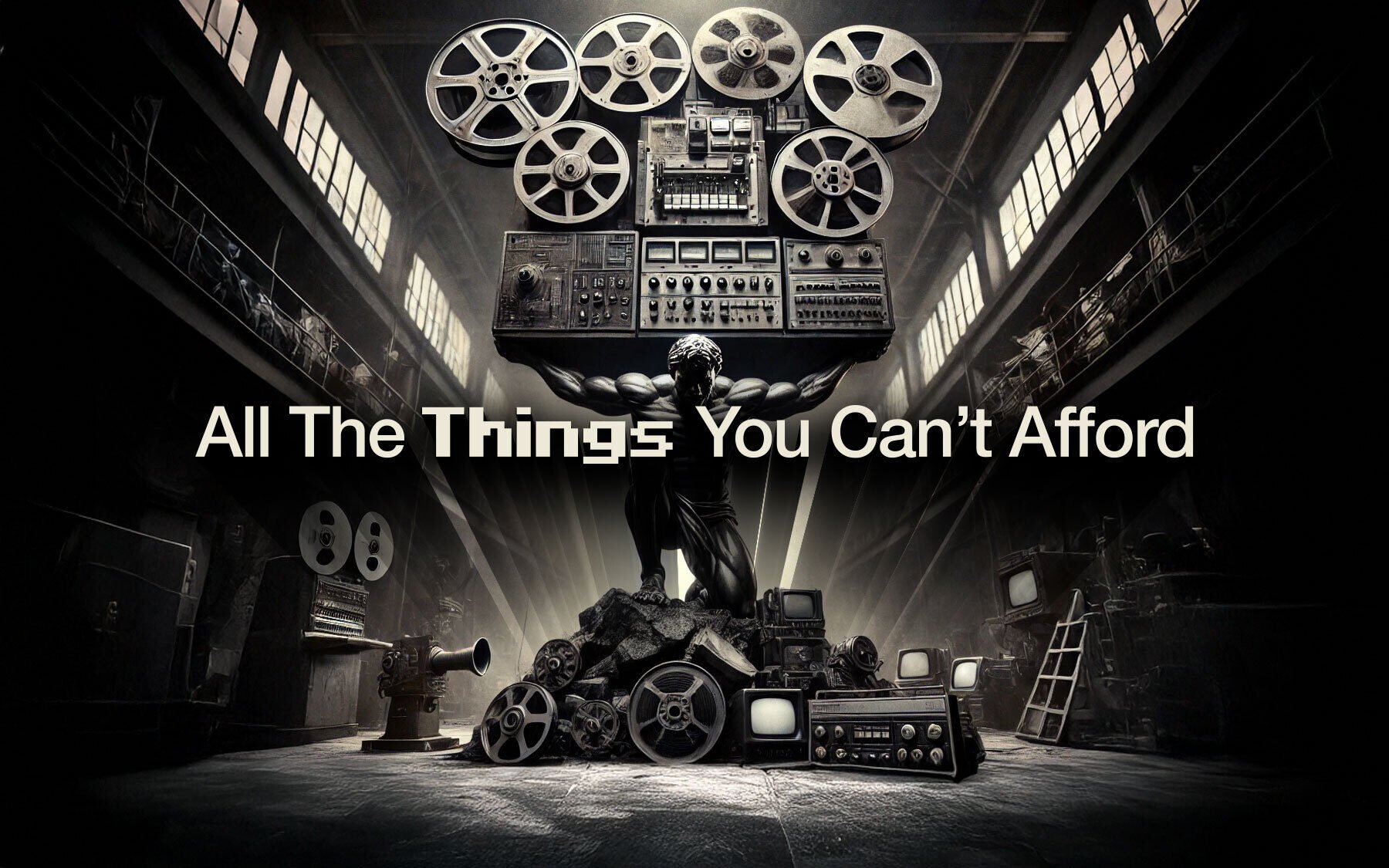A tsunami of content. Hyperbole? A worn-out trope? Or is it just that there are no other words that can accurately capture the amount of new audiovisual content being produced daily? Should we try numbers then? In 2023 alone Americans streamed 21 million years of content. 500 hours of video are uploaded to YouTube every single minute. And AI has already created as many images as photographers have taken in 150 years. Imagine what happens the moment generative AI video tools truly break on through (to the other side). THAT is pretty gnarly.
So it is a tsunami of content. One that will threaten creators with wipeout - both in a rapidly expanding ocean of other people’s content - and in a lake of their own content - because everyone now produces so much. Because the truth we tell ourselves is that there are so many niche creators out there generating so much content that it competes with media houses and professionals, and that is where the problem lies - when in fact that is only half the story.
Dude.
The truth is that major media houses contribute to the tsunami as well. The BBC alone operates on over 90 channels across all major social networks, including TikTok, SnapChat, Youtube, and creates content for every single one of them every single day. Yes, it’s often repurposed, but more and more often, it is modified to suit the platform, thus creating a new version, copy, or original work. Add to that personalization efforts where content is tweaked for an individual audience; the sheer amount being added to media houses’ own archives on a daily basis – archives that are already formidable – is huge.
And all this content and all those archives are an asset if, and only if, they can be used. Otherwise, they are muddy waters, either completely forgotten or actively making it harder to find what you need, fast. The value of all this dormant content is truly immeasurable, mostly because so much of it never gets used for anything. This is an opportunity lost, as a large archive of historical footage is one of the real differentiators a storied media producer can draw on.

So there is a lot of content. Both new content, AI-generated content, and old content that lies unseen, forgotten, and gathering proverbial dust on the proverbial shelf. It stands to reason that the single most important thing media producers can do right now is not to stem the tide of content because they can’t. To use the content wave and its incredible momentum, it is critical to implement a system and processes that allow content control well beyond what used to be the norm.
There are some key elements you should look for in a system to allow you to ride in the barrel, and not get ragdolled. Stoked yet? Here are three levels of excellent you need to wax that board and hit the surf.
A steady pop-up - ingest
Before you can control content you have to master the art of ingesting. This means you need a system, a process, a solution that gives you
- Support for any kind of content. This includes video and images, but also audio, graphics files and text-based media such as PDFs.
- Multiple ways to add content. There can‘t just be one way in. Maybe you work with watch folders, maybe you do desktop file drops, maybe you ingest through a NAS. Whatever is your preferred method should be available - and importantly you should be able to switch methods, or use them intermingled depending on your need.
- Upload portals. You will be collaborating with stringers, freelancers, members of the audience, and anyone and everyone who can get you footage. If that is going to work for you, you need a system with a robust and secure method to contribute both files and live video.
- Live ingest control. Being able to ingest, monitor, and work on any number of files as they come into your system is essential. And who has time for an ingest to complete to create a highlight reel? So you have to...
- Be able to work on a growing MXF and get stuff done fast enough.
- Ingest and work smoothly with on-premises and cloud content, mixing what works best for your hi-res and your proxies.
- Logging and tagging. In order to get to the next level, you have to be able to log and tag content in ways that go well beyond traditional archive topology. This is where AI can help, and if you can apply automated metadata to your tagging process, you will be able to handle a much larger set of content, much faster.
- Rights management and usage - if a system does not offer a way to monitor and manage rights, you put yourself at risk and at liability.

A cool hang five - searchability
Once your files are in the system, they will do you absolutely no good if you can’t find content and...
- Find it fast. Proper indexing and a cloud-based backend that scales with the size of your database will ensure you never run out of juice to work at top speed.
- Find it smart. Remember that logging and tagging? If done right - and if you also apply other AI services such as face recognition, object detection and labeling, translation, and more, and combine all that data into your content control hub - then you can search without knowing what you are looking for. And still find what you need.
- Find it naturally. The very best systems will offer you a semantic search option, a way to use natural language and vector-based search to search not just for the thing, but the thing it represents as well, and what lies next to it. But take care not to be limited to only semantic search - it is still a developing technology and might not give you all you need.
- Find anything from anytime and anywhere. Access to all your content - and this is the kicker on level 2. If you stop thinking about PAM, MAM and DAM as separate entities, if you stop segregating archived content from fresh content and just think of it all as a hill of gold to mine, you should be able to mine all of it, in a single place.

An epic hang ten - accessibility
So you have a well-indexed, mammoth content pool you can draw on to create stuff. You have control of your lives. But to get both feet dangling off the front edge of the board, in supreme control of the content wave, you need accessibility.
- Your team is spread out, not just at a hub, but at home, on the road, at events and everywhere in between. Content repurposing, creation and search happens all the time, and with a cloud-native, SaaS-based system you should be able to work from anywhere
- Anywhere is not just a physical location, it includes the hardware you need - the lowest common denominator of an internet-connected device is a browser, so any system that does not offer you full browser-based capabilities, is seriously limiting your team’s operational efficiency.
- You can find it but can you do anything with it? A great content control system will allow you to find, quick-cut and either publish a sequence directly or move it to an NLE for editing.
- Your content has to be accessible inside NLEs for your craft editors. They cannot waste their incredibly valuable time exporting and importing, but should be able to immediately search, find and utilize archive, new and live content from inside their work environment in the NLE.
- The same goes for newsroom access - a solid integration with NRCS systems, hosting fast search and content access inside the NRCS is one of the best ways to speed up story planning for journalists.

And then think of all this as the tool - the board - you need to surf the growing wave of content. If you can find what you need, fast, in a tool available where you need it, you can turn that tsunami from a drowning accident waiting to happen, to a sick ride.
Reach out if you want to tell André his writing is terrible. Or, if you want to grab a board, then ...





